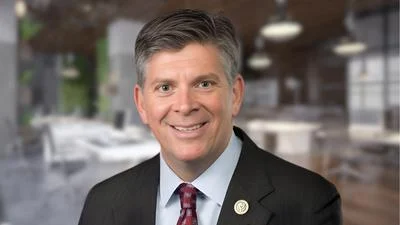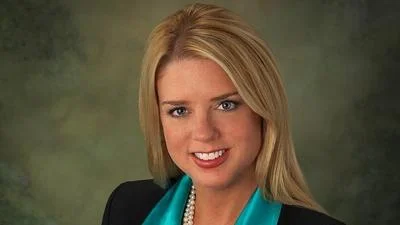On Feb. 11, the United States recognizes National Inventors Day, a day designated to salute past and present great inventors. National Inventors Day was first signed into declaration in 1983 by President Ronald Reagan. Reagan chose Feb. 11 to honor Thomas Edison's birthday. Edison was one of history’s most notable inventors, holding more than 1,000 patents.
Gordon R. Babbel and his Babbel Geiger counter.
The Office of Legacy Management (LM) recognizes National Inventors Day with a hat tip to Gordon R. Babbel, who invented his variation of the Geiger counter in 1950. As with most inventions, Babbel was looking for convenience; in this case, a more efficient way to prospect for uranium on the Colorado Plateau. Babbel’s Geiger counter was smaller and lighter than the commonly used Geiger counter, which made carrying it through the desert hills and canyons of western Colorado a far less taxing way to prospect for uranium ore. The Babbel counter is about the size of a lunch box and could be carried by one person.
Babbel Geiger counter as displayed in the Atomic Legacy Cabin.
Babbel’s Geiger counter was a solidly made instrument with many brass fittings, such as the probe and speaker grill. The probe was waved over the earth and a distinct clicking sound was made from the device as radiation was detected when the prospectors moved over an area of land. Prospectors commented that Babbel counters “were rugged beasts and have been used for 50 years, well into the 2000s.”
The front of the case has a connection for a "drill hole probe" that would be used for determining the vertical profile of the radiation levels in drilled geological strata. The meter has a connector for a strip chart recorder that could be used during these operations.
“Before Babbel was an inventor, he was a successful prospector,” said LM Public Participation Specialist Shawn Montgomery. “He and other specialist prospectors founded the Shinarump No. 1 mine in the Seven Mile Canyon area, near Moab, Utah, in 1948. Over 14,000 tons of uranium ore were shipped from the entire group of Shinarump mines.”
Later, Babbel established the Uranium Engineering Company and a laboratory in downtown Grand Junction, Colorado, where he continued to work with the Atomic Energy Commission (AEC) on special projects.
“We at LM are proud to salute an American inventor, prospector, and businessman, who had a major impact on the Colorado Plateau’s rich uranium-mining history,” Montgomery said.
A working Babbel Geiger counter is on display at the Atomic Legacy Cabin in Grand Junction, Colorado.









